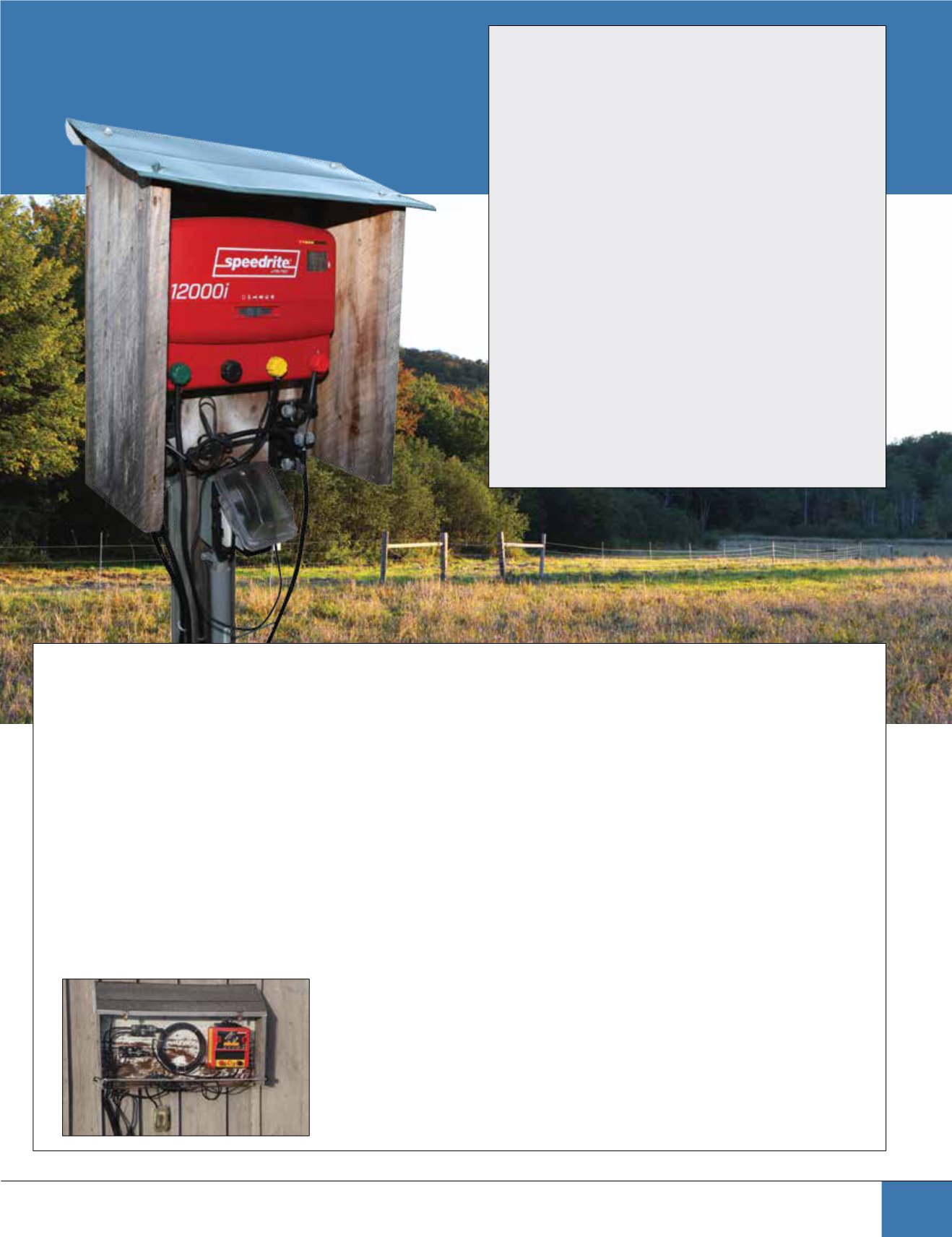
To Order Ca l l Tol l Free : 1-855-FARMFENCE (855-327-6336)
17
Energizers
When selecting an energizer (also commonly referred
to as a “charger” or “fencer”) it is important that the
appropriate type and size is chosen for the application.
Variables to consider when choosing an energizer include:
the resistance it encounters, what size area you plan to
fence (think about future expansion too), what type of
animal(s) you want to keep in or keep out, and level of
maintenance.
The effective “punch” that an energizer gives is determined
by the number of joules it produces. For example, a 2
joule and a 20 joule unit can both release 9,000 volts with
no load but, as soon as resistance increases, either from
additional fencing or vegetation growth, the 2 joule unit
will lose its ability to adequately charge the fence long
before the 20 joule one. Grounding can also affect the
efficacy of the fence. If this sounds complicated, call us -
we would be glad to assist you in choosing your plug-in,
battery or solar energizer.
Energizer Installation Tips
1.
Select the right size energizer for the job.
Choose by joules, not miles of fence.
2.
Preferably install the energizer outside
of buildings in a protected, three sided
enclosure.
3.
On AC units, plug them into at least a 1,000
joule surge protector on a GFI outlet.
4.
Locate the ground field in moist soil at
least 40' away from any utility ground,
buried water lines, or metal water tubs.
If not installing an additional lightning
ground field, then install the ground
rods directly under the fence where they
will not be in the way but accessible for
connecting a lightning diverter.
5.
Preferably use galvanized ground rods
located a minimum of 10' apart from each
other (not copper or rebar). Use heavy
duty underground electric fence wire to
connect the ground rods and energizer
together. Depending on the fence
resistance and soil moisture, figure 3' to 6'
of ground rod per joule of energizer.
6.
On large new fence installations, to test the
amount of ground needed, drive several
iron bars into the earth and lean them up
against the electric fence. Then, turn on
the fence and continue to pound ground
rods in a row 10' apart until there is less
than 500 volts in the last ground rod. This
will simulate future vegetation growth.
7.
To increase energizer protection, install a
double pole cut-out switch by the start of
the fence to transfer the fence wires to the
ground field before a thunderstorm.
8.
Connect a galvanized lightning choke/
diverter and/or an induction loop at the
beginning of the fence to a separate
ground field for lightning protection. Also
install additional diverters throughout the
fence perimeter to separate ground rods.
9.
Install a fence alert in a visible area to
alert of a low fence voltage or a broken
energizer.
10.
All insulated wire going underground
should be passed through PVC pipe for
additional protection. Add a drip loop to
prevent water from flowing into the PVC.
11.
Tie a knot in the energizer power cord
around the insulated wire going to the
ground field.
12.
For battery operated energizers, situate in
a water resistant position and keep off the
ground to minimize insect damage. Once a
year spray inside of case with a light burst
of insecticide.
13.
Situate batteries above the ground on a
block or platform, never place directly on
the ground.
14.
Prevent animals from chewing on solar
panels, lead out wires, or other pieces by
restricting access to them.
15.
When putting battery/solar energizers
away for the season, ensure they have a
full charge to prevent them from freezing
over the winter.


